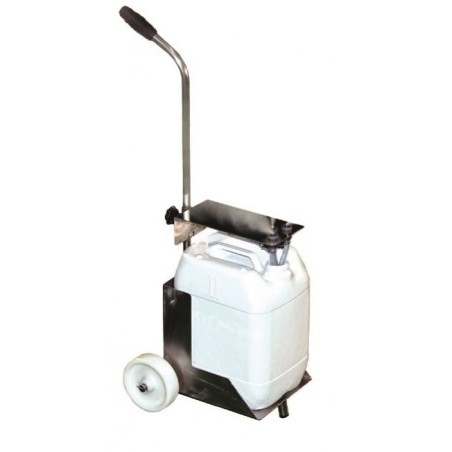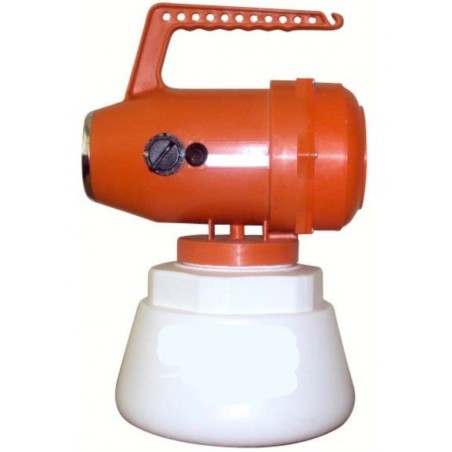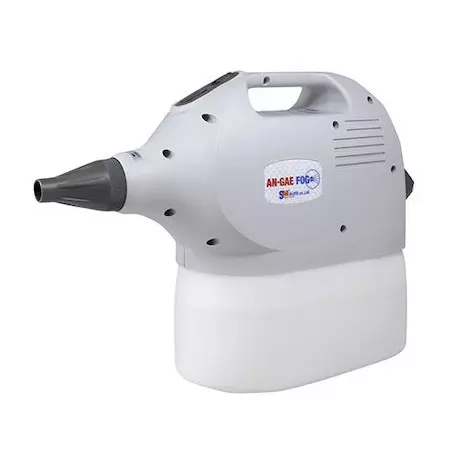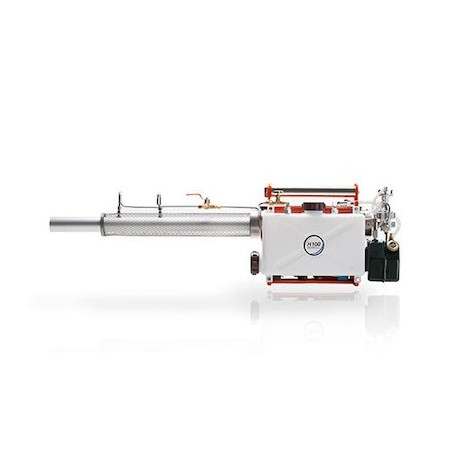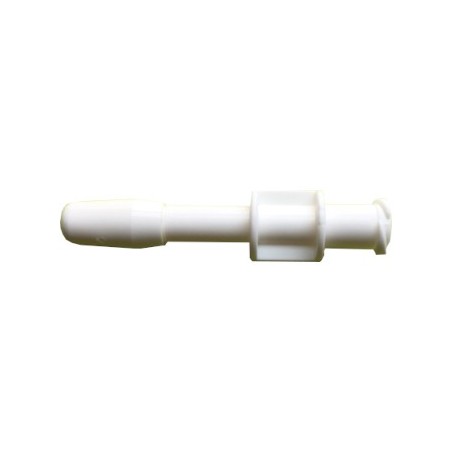This is the time of the year when most producers in the USA, Mexico, and southern and central Europe (especially) have a very challenging time maintaining strong finishing weights. The temperatures are beginning to rise into summer and the combination of facility/ventilation limitations; high stocking densities and unresponsive management all conspire to take 10-12 lbs (4-6 kg) off of average finishing weights at marketing. This weather and day-length induced “shortage”, both of pigs and pig weight, normally sends prices soaring to yearly highs over the summer months.
The movement of the planets in our solar system around the sun is clearly revealed when scanning a 12 month period of pig prices. This is a phenomenon we refer to as price seasonality. Seasonality is any regular, repeating price pattern observed to occur over a 12 month period. Pig prices rise and fall in regular 12 month patterns (as well as along longer trends and in a 2-4 year cycle) as seasonal infertility (due to heat of late summer and reduced photo-period detected by the breeding animal’s biological monitoring systems) conspires to make farrowing in winter a little harder to happen. That means fewer pigs to sell in summer, even from confinement operations.

The temperature pattern over 12 months encourages growth in fall and spring (with usually little impact from winter in confinement) and slows growth considerably in the summer heat. When visiting pig farms in the Sonora area of Mexico, producers reveal how they sometimes actually put up with net weight losses throughout the month of July where midday temperatures can reach 110ºF (43ºC) and higher with little relief at night.
Every year we preach about the edge producers can get if they can go “counter-cyclical” and be among the minority who can keep weights up through careful pig environment management, proper misting (versus simply drenching the animals periodically) and the right nutrition. In general, we find most producers cannot manage to consistently get into that group. There are all kinds of excuses and it is admittedly a challenge to work against Mother Nature but the reward is very high for those who can make it happen.
So I have been waiting now to see what happens this summer as the PEDV driven shortage of pigs, which has resulted in dramatic increases in average live weight for unaffected pigs, works its way into full summer high temperatures. I have put together a graph (Figure 1) of weekly average US live weights at marketing combined with the average weekly temperatures since 2001 of Des Moines, Iowa (which could be considered near the geographical center of US finishing pig activity) and net carcass price at market for producer sold hogs.
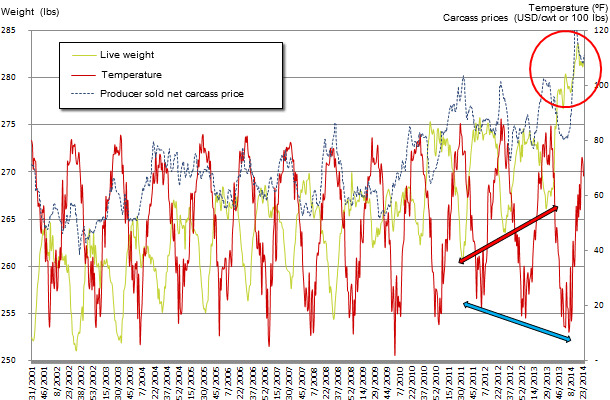
Figure 1. USA national average weekly live weight marketed vs. Des Moines, Iowa average weekly temperature, and net carcass price at market for producer sold hogs. Source: USDA AMS market news service and University of Dayton
You will immediately notice that temperatures and market live weights move in a near perfect inverted pattern to one another. There are also a few other things that become more apparent when you make a picture of data (a very important thing to do). First, we can see that average pig weights, though seasonal in pattern, have gradually risen, plateaued and are on the rise again over the last 10-12 years. One of the more interesting things to observe is that in the last three years, the average annual minimum live weight has been increasing even though the average low temperatures in winter have been falling. Summer weights have remained very stable over the same three years. This suggests that increased control is being exercised to manage weight variation and respond to optimal weight marketing schemes.
Notice that current weights are through the roof and at all-time highs for the modern period of meat pig production. We should be noticing a big decline shortly but I am guessing that the unprecedented level of profitability associated with current pig prices and relatively lower feed costs will keep producers focused on managing higher weights well into the summer heat. In fairness, finishing space has increased due to gaps left by PEDV casualties so the crowding impact which results in average daily gain suppression may be lessened (the space is housing fewer but larger pigs so there is some offset). The peak temperatures normally occur around the first week of August (weeks 30-33, first week of January = week 1, etc.). Let’s see what happens. If weights are maintained, then I am going to get increasingly skeptical of the excuses for rapidly declining summer weights in future years.




